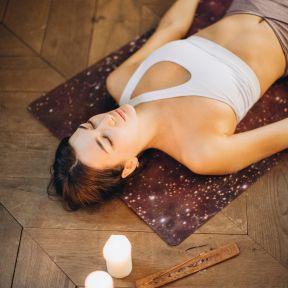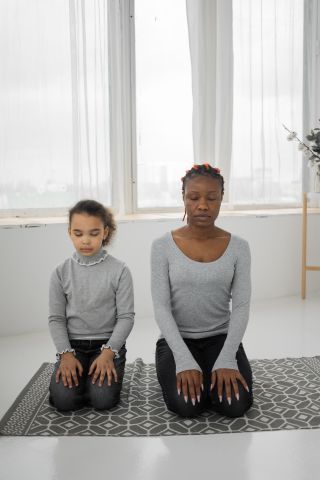STRESS- How to Learn to Relax. Relaxation is an essential skill integral to all physical activities. Reviewed by Jessica Schrader

KEY POINTS-
- Relaxation is a movement skill and an essential element of well-being.
- Relaxation and action become a continuous "active-passive" loop in movement performance.
- Relaxation needs to be actively practiced as a precondition to develop movement ability.

Long-term stress has become a growing health concern. It can cause or make worse a range of physical illnesses such as cardiovascular disease (e.g., Steptoe & Kivimäki, 2012) and mental health issues such as depression (e.g., Hammen, 2005). Managing stress, thus, is important for good health. One way of reducing stress is relaxation. This is supported by the discovery of the Relaxation Response (RR) first identified by a group of researchers in the 1970s (Benson, Beary, & Carol, 1974). They illustrated how the para-sympathetic nervous system stimulates a RR to block the sympathetic nervous system’s physiological response to stress. Activating the RR that decreases blood pressure, heart rate, and respiration rate can help heal both body and mind as it relieves the burden of stress on the body (Luberto et al., 2020).
Several practices such as diagrammatic breathing, guided imagery, and progressive muscle relaxation have been developed to elicit the RR. There are also mindfulness practices such as meditation and meditative movement practices such as yoga or tai chi for the same purpose (Luberto et al., 2020). These practices aim to awaken the innate RR as a physiological response. While they can be effective, there are also other ways to think about relaxation.
In her recent work, Gunn Engelsrud (2023) considers relaxation, instead of a primarily physiological response, as a skill that requires active learning. This is a radical approach to relaxation that we usually think of as something that “people should practice to feel better” by taking part in “retreats, courses, and lifestyle makeovers." Relaxation, for Engelsrud, is “an intrinsic part of being alive as a human being” but also a movement skill: “a precondition for all movement capability and an achievement in its own right." All movement requires relaxation that allows us to release the body’s weight as well as our thoughts and feelings in interactions with others and our environment. Engelsrud provides two everyday life examples of how relaxation is an essential part of all movement experience.
Engelsrud’s first example comes from a mindful practice setting, yoga, that is already recognized as a space for relaxation and meditation. She uses the shavasana (a "corpse pose") posture, traditionally performed at the end of a class, as a case in point where relaxation is a part of the skill of executing the posture. In this pose, which is considered a "mental relaxation," the participants lie on the floor on their backs “with their heels spread as wide as the yoga mat and their arms a few inches away from their body, palms facing upwards." The yogi, as Engelsrud describes, is to give her body weight into the ground, relax her breath, and do nothing. This, however, is not a passive state, but a self-initiated, intentional movement: it is a practice to learn how to do nothing. It cultivates a sensibility for relaxation when not actively moving. According to Engelsrud, finding relaxation in this pose is “the most important and the most difficult in the practice of yoga." Doing nothing, giving the body weight to the ground without visible movement activity, is a challenge; an achievement, a skill, on its own. As feeling relaxation in shavasana is difficult, it, like all movement skills, requires practice and patience. Yet, Engelsrud emphasizes, shavasana, instead of an end of itself, is to make new movements available to the yogis: relaxation is “a precondition for active movement" by learning to be present.
As a second example, Engelsrud uses sport action: a world champion high jumper, Norwegian Hanne Haugland’s experience of a successful performance. "Everything clicked" when Haugland learned to find balance and rhythm between relaxation and her movements. Like a yogi in Shavasana, she described the importance of being completely present to allow a "unity of continuous movement" of relaxation and "attack." In this sequence, the relaxation phases are equally intentional to the other technical movement phases. Without learning the correct series of action also in everyday life, as Engelsrud describes, “we do not know what we are doing, and … feel uncoordinated, clumsy, and disorientated." Active movement performance, then, is not possible without relaxation: to experience bodily action, one needs to be absorbed into the movement to then relax. In these moments, there is “no separation between thought and movement," mind and body. This is also the condition for successful movement performances in everyday life.
Engelsrud concludes that relaxation is a necessary part of the “active-passive loop" of skillful movement performance during which we can feel at ease rather than tense. As such, relaxation is an essential movement skill in life. Relaxation comes before activity that then requires a relaxation phase to activate again: the yogi must release the weight of her body after yoga practice but also be able to learn new yoga movements. In this context, relaxation can feel like hard work, “an achievement and a skill."
Following Engelsrud, relaxation should be understood as being intertwined with all physical activity in everyday life. Instead of beng practiced in isolation, relaxation needs to be actively trained throughout life as a precondition for all movement capability. When thought of as a movement skill, relaxation, as an innate response and an intentional action, becomes an essential element of well-being.
- Questions and Answers
- Opinion
- Motivational and Inspiring Story
- Technology
- Live and Let live
- Focus
- Geopolitics
- Military-Arms/Equipment
- الحماية
- Economy/Economic
- Beasts of Nations
- Machine Tools-The “Mother Industry”
- Art
- Causes
- Crafts
- Dance
- Drinks
- Film/Movie
- Fitness
- Food
- الألعاب
- Gardening
- Health
- الرئيسية
- Literature
- Music
- Networking
- أخرى
- Party
- Religion
- Shopping
- Sports
- Theater
- Health and Wellness
- News
- Culture

